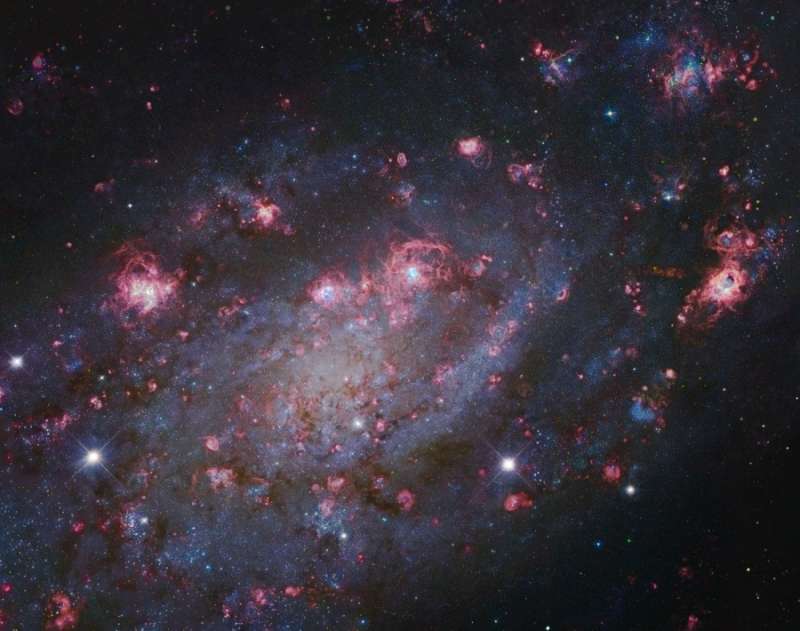Credit & Copyright: Image Data -
Subaru Telescope
(NAOJ),
Hubble Legacy Archive;
Processing -
Robert Gendler
Explanation:
Magnificent island universe
NGC 2403 stands
within the boundaries
of the long-necked constellation
Camelopardalis.
Some 10 million light-years distant and about 50,000 light-years
across, the spiral galaxy also seems to have more
than its fair share of giant star forming
HII regions,
marked by the telltale reddish glow of atomic hydrogen gas.
In fact, NGC 2403 closely resembles another galaxy with an
abundance of star forming regions that lies
within our own local galaxy group,
M33
the Triangulum Galaxy.
Of course, supernova explosions
follow close on the heels of
the formation of
massive, short-lived stars and
in 2004 one of the brightest supernovae discovered in recent
times was found in NGC 2403.
Easy to confuse with a foreground star in our own Milky Way Galaxy,
the powerful supernova
is seen here as the spiky, bright "star" at
the left edge
of the field.
This stunning cosmic portrait
is a composite of space and ground-based
image data from the Hubble Legacy Archive
and the 8.2 meter Subaru Telescope at the summit of
Mauna Kea, Hawaii.
1999 2000 2001 2002 2003 2004 2005 2006 2007 2008 2009 2010 2011 2012 2013 2014 2015 2016 2017 2018 2019 2020 2021 2022 2023 2024 2025 |
Январь Февраль Март Апрель Май Июнь Июль Август Сентябрь Октябрь Ноябрь Декабрь |
NASA Web Site Statements, Warnings, and Disclaimers
NASA Official: Jay Norris. Specific rights apply.
A service of: LHEA at NASA / GSFC
& Michigan Tech. U.
|
Публикации с ключевыми словами:
spiral galaxy - HII region - star formation - supernova - спиральная галактика - области HII - звездообразование - Сверхновые
Публикации со словами: spiral galaxy - HII region - star formation - supernova - спиральная галактика - области HII - звездообразование - Сверхновые | |
См. также:
Все публикации на ту же тему >> | |
Мнения читателей [4]
